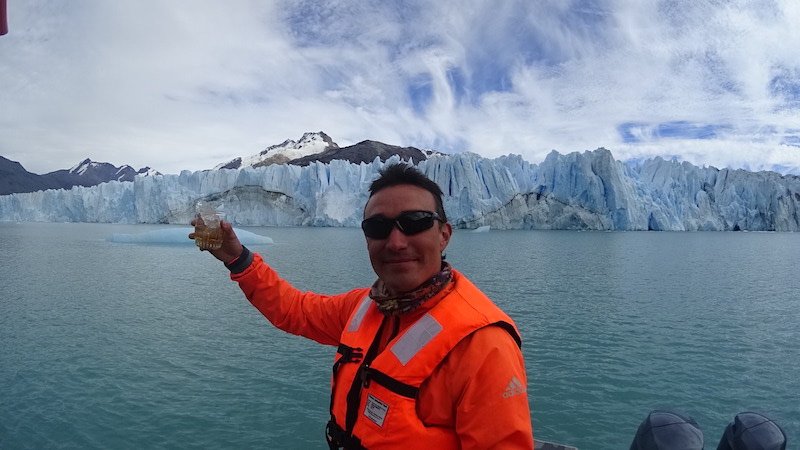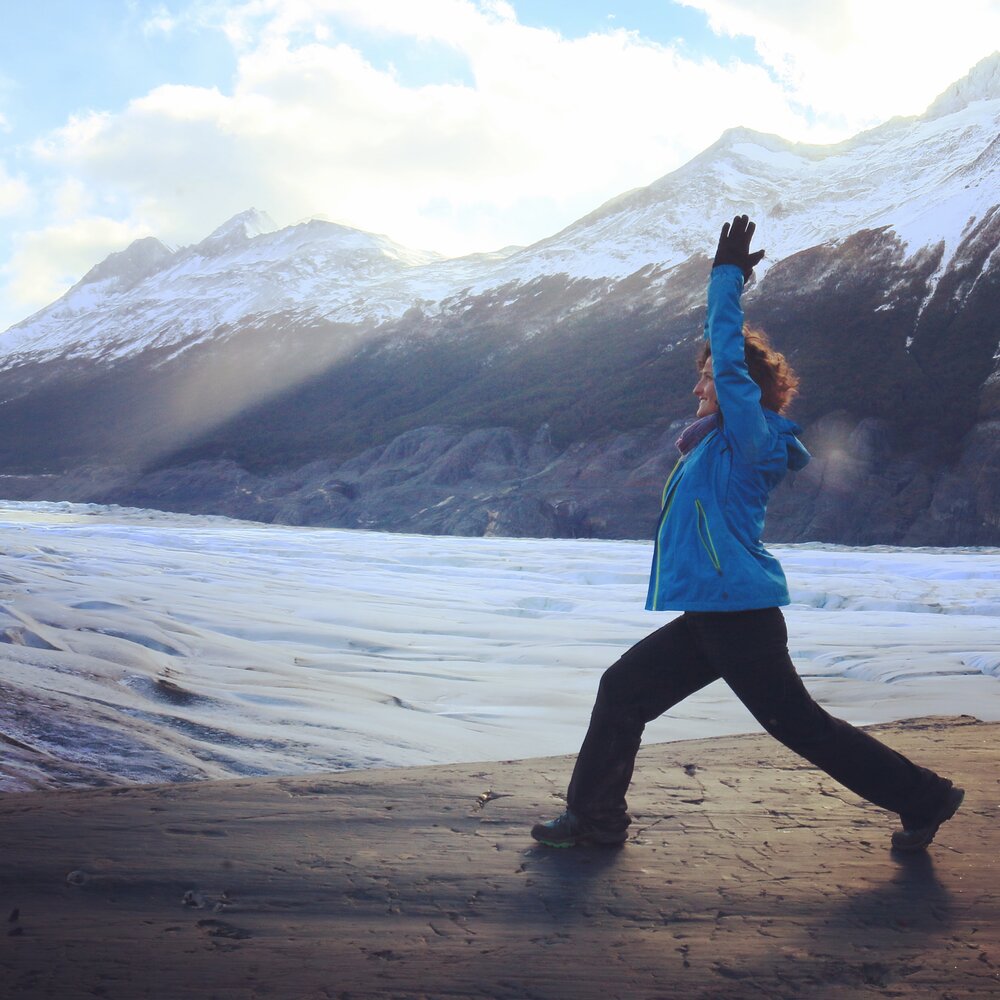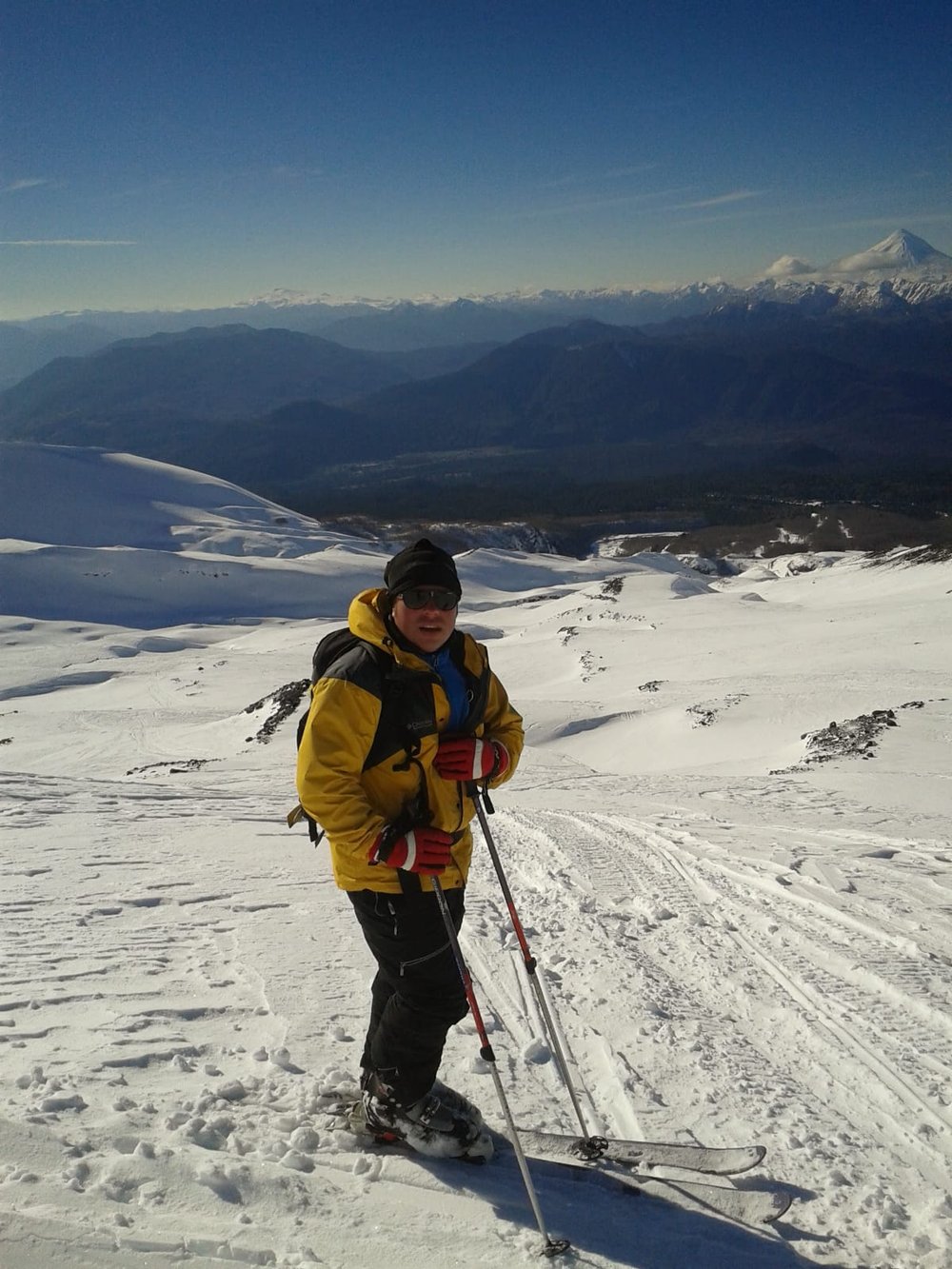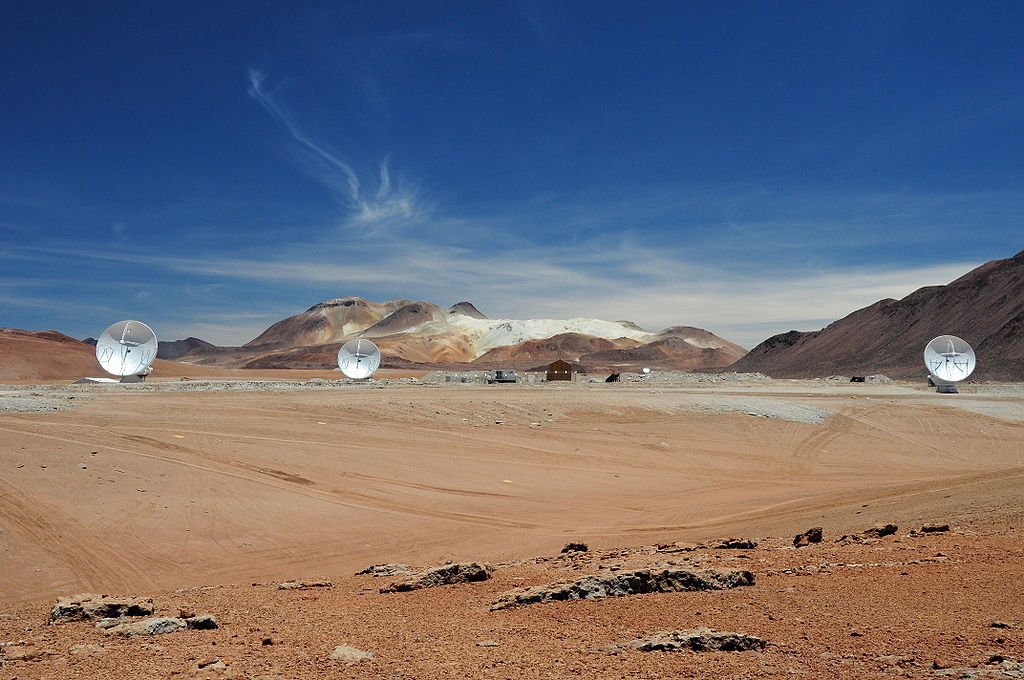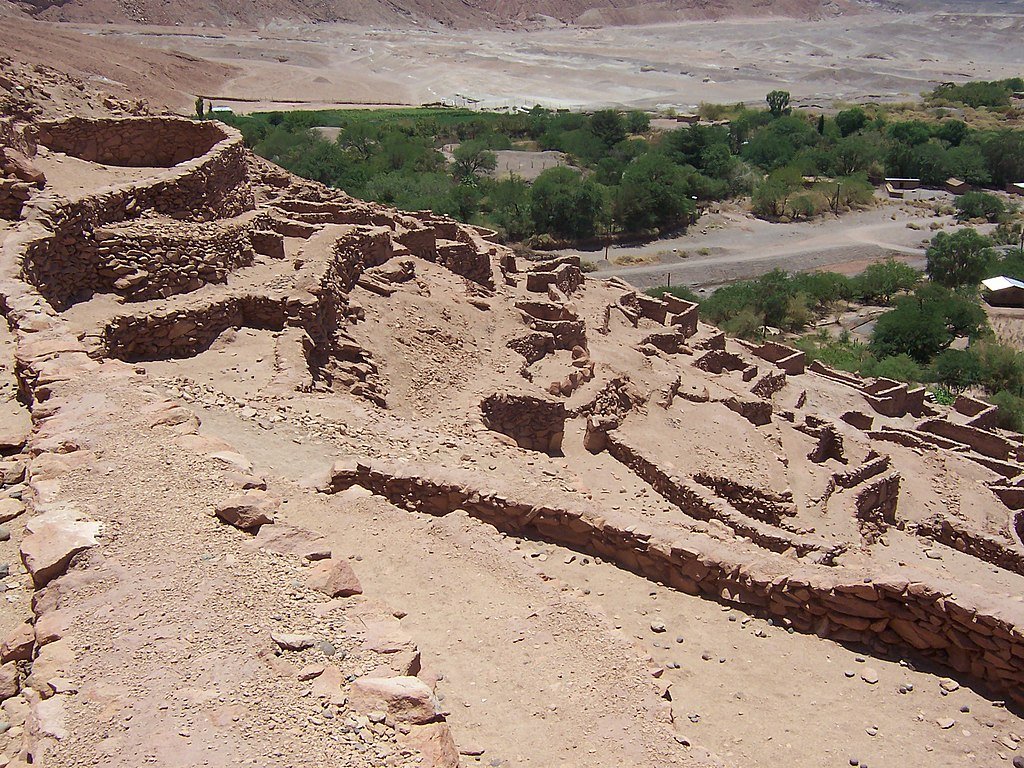A Local’s Guide to Visiting the Atacama Desert
The Atacama Desert, the driest one in the world, is a vast expanse in northern Chile, covering 3 out of 16 of the administrative regions of the country, approximately 14% of its total area.
It encompasses some of Chile’s most famous seaside cities, ancient indigenous archaeological sites, remnants of the country’s glorious saltpeter mining days, and many natural wonders such as the Atacama Salt Flat and the world’s highest geyser field.
At the same time, its incredibly clear skies have attracted astronomers from around the globe, prompting the construction of some of the most advanced telescopes here.
Although this is a desert, the area is known for its exotic plantations that produce vegetables and fruits all year-round. In addition, this part of the country is also where most of Chile’s copper mines are located (one of our most important industries).
I know that’s quite a lot to take in, but for an expanse of land covering 1/6 of a country’s landmass, I don’t think it should be too surprising that there is a lot to see and do here. For international visitors, the Atacama Desert is mostly synonymous with the town of San Pedro de Atacama, but the reality is very different.
This vast territory boasts an incredible amount of cultural, historical, and geographically, and it’s one of the most interesting parts of Chile to explore.
More Chile travel info:
For more information on visiting Chile, check out our list of 17 places to visit and this guide to San Pedro de Atacama
And if you could use some one-on-one help planning your trip, schedule a Chile travel consultation with one of our Local Experts!
Table of contents
Introduction to the Atacama
Where is the Atacama Desert?
How to get here
When to visit
How long to spend
Where to stay - best bases
Transportation within the region
Best places to visit
Things to do
8-day Atacama itinerary
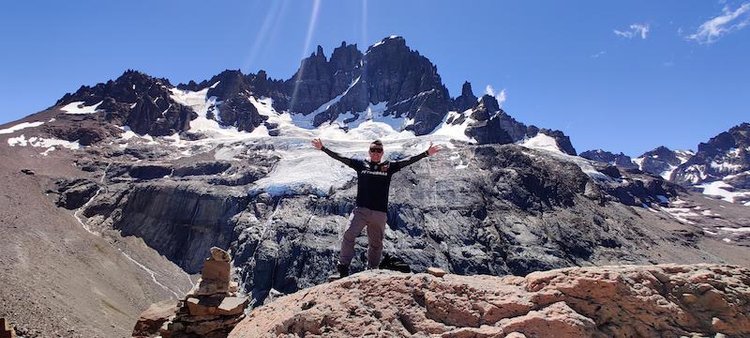

Introduction to the Atacama
Despite being a desert, the Atacama affords visitors the opportunity to relax in coastal beach towns, visit verdant oases nestled between barren hills, climb some of the highest peaks of the Andes mountains, and go birdwatching along the sea or in one of its many salt flats or high-Andean wetlands (known as bofedales).
This is also a fantastic place for stargazers, who enjoy searching for constellations in the unbelievably clear skies.
Mining has always been the main economic activity in the area. Saltpeter extraction was the most important source of income until the 1920s, when synthetic nitrate was produced at a lower cost. Dozens of abandoned saltpeter works can be spotted throughout the Atacama Desert. Some of them have been declared national monuments and can be visited to learn about the way of life back then.
This area is also known for its native peoples, mainly of Quechua and Aymara origin, who primarily live in the High-Andean plateaux and move around the border regions between Peru, Bolivia, and Chile. They are famous for their colorful dresses and dances, which they bring to life especially during the carnival season in February.
Archeological sites and finds have also been associated with the Atacama. These include ancient forts, giant images - or geoglyphs - on hills, and the Chinchorro mummies, the oldest in the world.
Where is the Atacama desert?
The Atacama Desert encompasses what Chileans call the Norte Grande (far north), stretching from the border with Peru (in the far north of the country) to the Copiapó River about 750 miles south. The northern half of the region is bordered to the east by Bolivia, while the southern half stretches along the frontier with Argentina.
In total, it covers an area of approximately 40,000 square miles, roughly the size of the state of Kentucky in the United States.
Of the three administrative regions that comprise the greater Atacama Desert, Arica & Parinacota is the northernmost, and is located almost 1,300 miles away from Santiago, the country’s capital (approximately 2.5 hours by plane). The coastal city of Arica is the region’s capital and largest city, and sits almost on the border with Peru.
The next region that makes up this desert is Tarapacá, with its capital city of Iquique approximately 4 hours south of Arica by car or bus.
The southernmost region in the Atacama Desert is Antofagasta, whose capital city of the same name is located 5.5 hours south of Iquique and about 825 miles north of Santiago.
All three major capital cities in this territory are coastal towns with populations surpassing 100,000 people, and each of them serves as a gateway to beautiful places and indigenous towns in the High-Andean plateaux.
All of Chile, the Atacama region included, is mainly connected by the north-south running Route 5, also known as the Pan-American Highway. This is the principal road throughout the region.
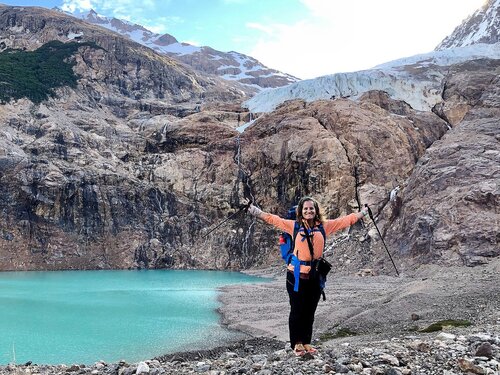
Connect with a Chile travel expert for help perfecting your itinerary, answers to all your travel questions, and fabulous local tips for a better visit!
How to get here
In order to travel to the Atacama Desert, you must start either in Santiago or the northern city of Arica. There are three main means of transportation to this area:
Arriving by plane
The most common and quickest way to get here is by taking a flight from Santiago, Chile’s capital city. All international flights arrive into Santiago, and from there, you can easily catch a connection to the north.
There are direct flights to all three regional capitals (Arica, Iquique, and Antofagasta), as well as to Calama, the city closest to the town of San Pedro de Atacama
Flights take from 2-3 hours and typically cost under $100 each way. You’ll find multiple flights per day to each of these cities.
Arriving by car
Alternatively, If you have lots of time during your travels in Chile and want to admire the scenery along the road, you can rent a car in Santiago and make the long drive north to the Atacama.
From Santiago, you’ll head due north along the Pan-American Highway, Route 5, which connects most of the country. Santiago is located 1,300 mi away from Arica and the total driving time to reach the city is about 17 hours (without stops).
Route 5 is a very well maintained road and is easy to drive on, but be aware that once you reach the Atacama, some roads will be rugged, so having a 4x4 vehicle is often desirable.
Arriving by bus
There are also buses that travel regularly from Santiago all the way to Arica. The journey takes close to 30 hours and costs between $60.000 and $80.000 Chilean Pesos, about $65-$85 USD. Travel times to more southern destinations in the Atacama are a bit shorter. The buses make pit stops along the route, so you will not be stuck on board for 30 hours straight.
You can find routes, timetables, and rates, and can book online in advance on the bus company websites: https://kupos.cl/en and https://www.recorrido.cl/en
When to visit
In my opinion, the best time to visit the Atacama Desert is in the spring, between September and November. This season provides the ideal balance between available activities, good weather, and less crowds.
I’ve provided a quick season-by-season overview below, but before getting into that, I just want to fist share some general information about the weather in this region, which should help you determine when is right for your visit:
Northern Chile is known for its desert, but not everything is dry and barren land. There are actually several sub-climates in this grand expanse. In general, our weather is divided into three areas: coastal, valley, and mountain.
The coastal section is known for being rather stable, since minimum and maximum temperatures do not have a great variation during the day or during the year. In addition, it is usually cloudy in the mornings until noon.
The valleys tend to have more defined seasons (summer, fall, winter, and spring). The temperature fluctuation is a bit more pronounced during the day.
Finally, the Andes Mountains present the main challenges: this area experiences significant day/night temperature variations all year round, with averages of 70° F during the daytime dropping down to 30° F in the nighttime.
Winter (June through September)
Winter is considered low-season for tourism in the Atacama, although some families do travel to northern Chile during their children’s two-week winter recess, usually in July. Prices for tourism related services are at their lowest during this period, but there are fewer options as as some businesses close down for the season.
Temperatures tend to be much lower as well, but this will partly depend on the city/destinations that you wish to visit. For instance, there might be heavy snow in the Andes mountains during these months, sometimes forcing transport and border authorities to close domestic and international roads, as well as the crossings to Bolivia and Argentina. Meanwhile, temperatures along the coast will be quite moderate. It really depends on where you go.
If you’re here in June, don’t miss the winter solstice celebrations held by the indigenous communities, This is a sacred date for them and it’s also a public holiday in Chile, known as Indigenous Peoples Day. Although the exact day varies, it usually falls between June 20 and June 22.
Spring (September through December)
This is a great time to travel to the north. The weather is mild and pleasant, attractions and services are open, but you won’t find any large crowds.
If you come on the week of September 18, you might run into some people celebrating Chile’s independence from Spain along with vacationing families: schools take a recess that week and parents usually request some vacation days to enjoy the entire week off with their children.
Be aware that due to the non-renounceable holidays, most places will be closed on September 18th and 19th, unless they have special permits to hold Fondas, traditional parties to celebrate this festivity.
Summer (December through March)
This is the high season for tourism in Chile, and the Atacama Desert is no exception. During these months, all tourism providers and services will be open and fully operational, so you’ll have the widest selection for accommodation, tours, excursions, etc. Of course, there will be significant crowds in popular tourist destinations and prices will be at their highest for everything.
Chileans usually take their annual holidays in February and children don’t start school again until March, so those are the busiest months.
If you’re a fan of cultural traditions, you won’t want to miss carnival, celebrated throughout the towns in the High-Andean plateaux each year, seven weeks before Good Friday. As you know, the date for Good Friday varies each year, so check the calendar if you want to visit for carnival.
Unfortunately, this is a tricky period to visit because the High-Andean plateaux of northern Chile and southern Peru experiences a weather phenomenon locally called invierno altiplánico (High-Andean winter), which brings heavy storms.
While some years the phenomenon will produce only a few scattered showers, other times it can manifest with heavy rainstorms, lightning storms, and hail that pours down relentlessly on the unprepared desert communities. This heavy precipitation can sometimes cause flash flooding of waterways and even mudslides, with disastrous consequences.
Autumn (March through June)
Just like the spring, this is also a fantastic time to visit northern Chile. Things are winding down after the busy summer season, but the weather is still very pleasant and most tourist infrastructure will still be open/operational.

How long to spend here
To see everything that the Atacama Desert has to offer in its 40,000 square miles, you would need to visit all three administrative regions, each of which is quite distinct and has it’s own unique attractions.
While that would undoubtedly be the trip of a lifetime, it would take around 2 weeks. Considering that most visitors only have 1 or 2 weeks to visit the entire country, that’s unfortunately not an especially realistic plan.
So, what makes the most sense is to pick one of the regions and then plan out a 3 or 4 day itinerary within it. Visiting the Antofagasta region, particularly the area around the town of San Pedro de Atacama, is by far the easiest and most popular option, so I’ve provided a 3/4 day itinerary for that below:
Day 1: Fly from Santiago into the city of Calama, and then depart immediately for San Pedro de Atacama. Spend an hour or so exploring the town, and then head out in the afternoon to visit the nearby ancient indigenous ruins of Quitor and Tulor and the Moon and Death Valleys.
Day 2: Get an early start (4:30 a.m.) with a full-day tour to visit El Tatio Geysers and the Puritama Hot Springs.
Day 3: Enjoy a visit to the town of Toconao and Laguna Chaxa (Chaxa Lagoon) in the Atacama Salt Flat, Los Flamencos National Reserve. At night, go on a stargazing tour at a locally run observatory.
Day 4: On your final day, prepare your departure from San Pedro de Atacama to Calama airport to board a flight back to Santiago. Keep in mind that, due to travel regulations, check-in must be done at least two hours before your flight leaves.
Note: If you can add more days, or prefer to go off the beaten path, you may want to consider exploring some of the following lesser-known attractions: the modern ALMA Observatory (with tours only on Saturdays and Sundays), Valle del Arcoíris (Rainbow Valley) and Salado River, the Chamán geoglyphs, the Jere Valley, and the Lickan Antay lookout.
For other ideas, I’ve included an assortment of regional and region-wide itineraries at the end of this guide.
Where to stay - best bases
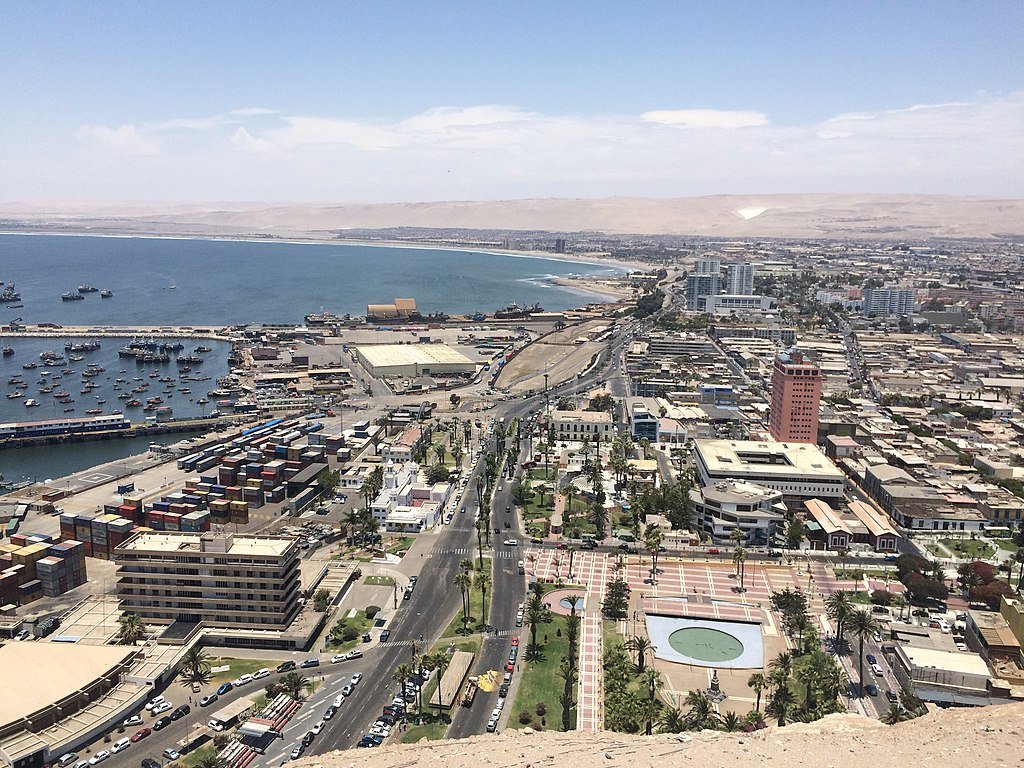
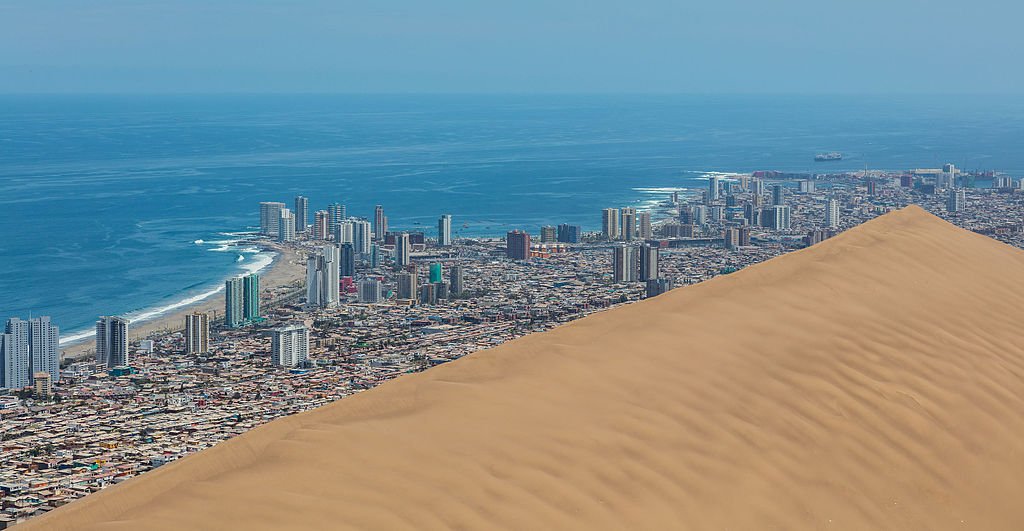
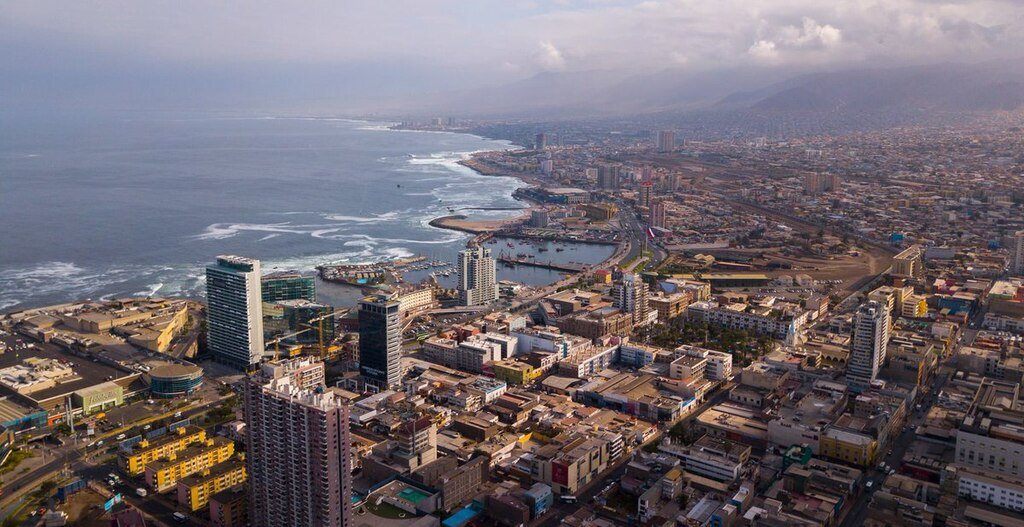
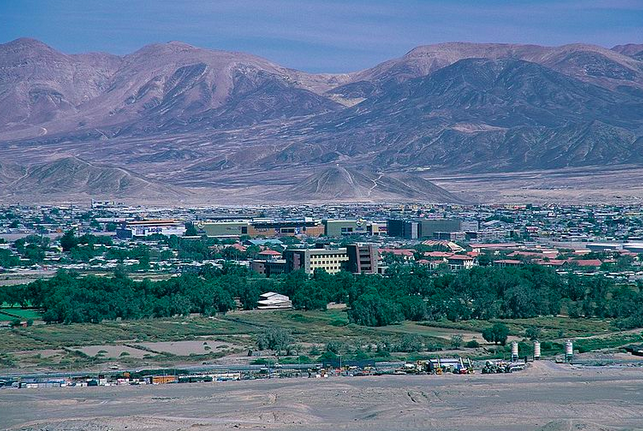
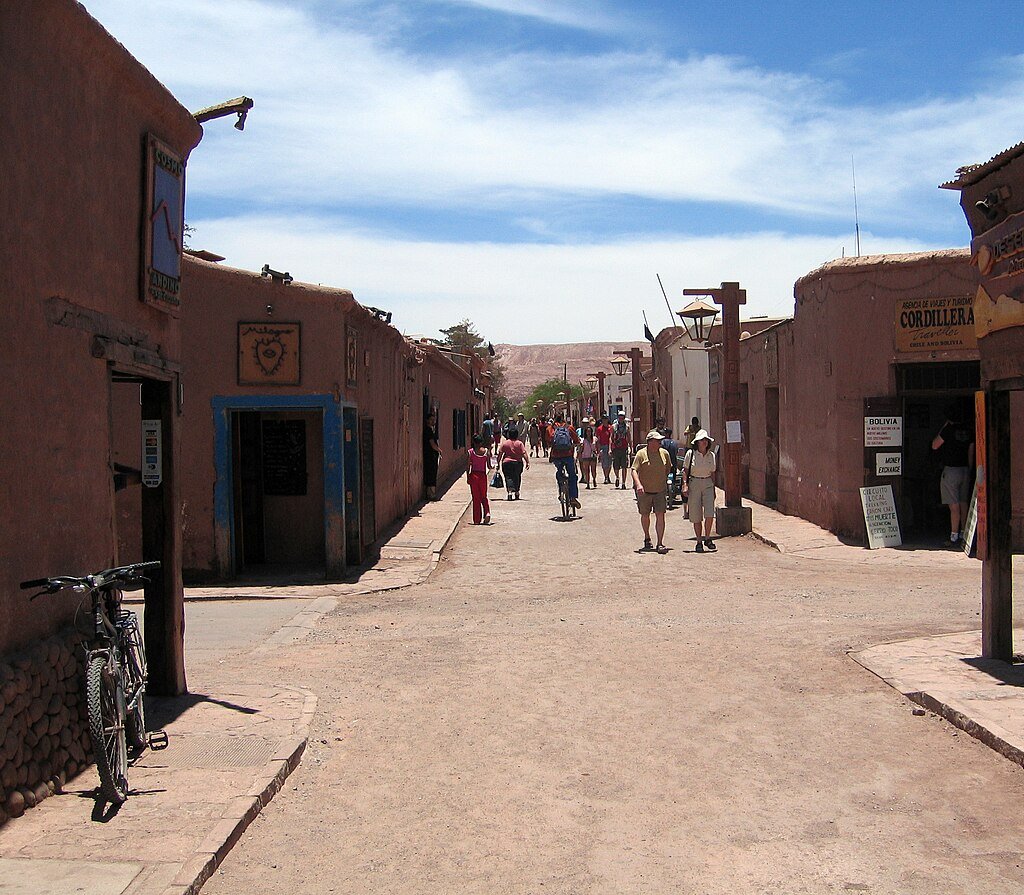
Since the Atacama Desert is so large, it’s impossible to explore it from one single location. Therefore, you’ll need to move around and consider different bases depending on where you’re touring.
Arica (in the far north)
In the far north of the Atacama Desert and with a population of approximately 250,000 people, Arica is a regional capital city where you can find all kinds of accommodation and services.
It’s also the gateway to the High-Andean plateaux, locally known as puna or altiplano, which is a popular destination among domestic and foreign tourists. The major places to visit outside of the city are Lauca National Park and the nearby towns of Putre, Socoroma, and Parinacota.
You’ll find accommodations for any budget, including hostels, serviced apartments, and everything from low-cost to five-star hotels.
I recommend staying at least two or three nights here to make the most of the city and surrounding attractions. A day trip to Lauca National Park will take anywhere from 12-14 hours, so that alone will take up an entire day.
Iquique
Located 190 miles south of Arica, Iquique, with a population of 230,000, is a good base if you want to hit the beach, do some adventure sports, visit Volcán Isluga National Park in the altiplano, or tour the now ghost-towns that were formerly mining bases.
Iquique has its own rich history and an interesting cultural mix because of the many people who have come here from all over the world, attracted by the city’s free trade zone, the Zona Franca de Iquique - ZOFRI. This gives the city a lively environment and an interesting restaurant scene, with a broad variety of different cuisines.
In Iquique you’ll find everything you need to stock up for during your stay (ATMs, banks, money exchange offices, convenience stores, etc.). There is also a wide array of tourism services, including lodging options for all budgets.
I recommend staying at least two or three nights here, depending on whether you decide to go up to the altiplano or not.
Antofagasta
Antofagasta, located approximately 258 miles south of Iquique and with a population of nearly 442,000 people, is the largest city in the Atacama Desert. That’s because this is where most people who work in the nearby copper mines live. Therefore, it’s a modern city, with all kinds of local amenities, including several shopping malls with easy access to money exchange offices, ATMs, and banks.
Antofagasta is a good place to connect with the city of Calama and San Pedro de Atacama, which is a prominent destination among domestic and foreign tourists.
I recommend staying one night here, mainly just as a place to rest and break up your north or southbound journey.
Calama
Leaving the coast and heading up to the altiplano, the main city in this area is Calama, which sits 7,400 feet above sea level. It has a population of 195,000 and its residents mostly rely on the nearby Chuquicamata copper mine for their livelihood.
Calama is mainly used as a hub because it’s the gateway to the famous town of San Pedro de Atacama and the Atacama Salt Flat, which attract thousands of visitors each year. If you need to get supplies or withdraw cash, it’s good to stock up here, since things can be scarcer and more expensive in San Pedro de Atacama.
Calama is mostly a waypoint on journeys elsewhere, and the main reason to spend any significant time in the city would be if you want to visit the nearby mine, the largest open pit copper mine in the world. There are also some nearby Lickan Antay ruins and, typical altiplano towns, and the Laguna Inka Coya.
Stay here a couple of nights if you want to visit everything above.
San Pedro de Atacama
San Pedro de Atacama, despite having a population of only 10,000 people, is the only logistical base in the surrounding area. This small town with unpaved streets will be the starting point for your excursions to the surrounding natural and cultural attractions.
Most services and businesses, as well as the four existing ATMs and several currency exchange offices, are on the town’s Toconao and Caracoles streets. Food and lodging options have expanded over the years, resulting in a varied offer with alternatives for all kinds of budget, from hostels for backpackers to all-inclusive resorts.
The town is nothing special, but the surrounding area is rich in other-worldly landscapes, lagoons, historical sites, and Lickan Antay culture/communities, so I recommend staying here two or three nights to make the most of it.


Transportation and getting around the Atacama Desert
As mentioned above, the Atacama is a vast and sparsely populated area, so travel times here are often very long, and you need to plan out your itinerary well in order to minimize wasted time in transit.
Here is a quick overview of the various transportation options:
Intercity & night buses
The Atacama region is pretty well served by a reliable and fairly extensive network of intercity buses. These buses traverse the region, usually with at least daily departures connecting the major cities and destinations.
Just be aware that there are not always direct connections, which means you will often lose time making stops and coordinating transfers.
Night buses are pretty frequently available for long-distance journeys, and they are comfortable, safe, reliable, and have the benefit of traveling during the night, meaning you never lose daytime hours to travel.
You can find schedules and fares on the bus companies’ websites: https://kupos.cl/en and https://www.recorrido.cl/en
Renting a car
When traveling here, I personally prefer to fly into one of the main cities and then rent a car. There are rental offices at all the airports, so pick-up and coordination is quite easy. You can also get your car in one airport and then return it at another, albeit with a one-way drop-off fee. This is super convenient though, as it means you could rent a car in the north, go about your trip, and then return your car at a more southern airport (no need to double back).
Route 5, the Pan-American highway is the major road throughout the region and it is well-maintained and easy to drive on. Many of the smaller roads in the region are unpaved and rather rugged though, so I always recommend renting a 4x4 vehicle.
You can book directly with any of the rental companies, but I typically use Discover Cars, an online car rental aggregator that lists all the companies and their prices.
Organized tours & excursions
Occasionally, I’ll book tours with local tour companies, especially when traveling to destinations where the terrain is rough, the drives long and taxing, or if the logistics are complicated.
One such example is the day trip to the Tatio Geysers, which requires leaving San Pedro de Atacama between 4:30 and 5:00 AM. That’s too early for me to want to be driving myself, so I prefer to go with a tour company. Likewise, the road from Arica to the town of Putre (near Lauca National Park), is a long and difficult drive, and it’s one that I’d rather not do myself.
There are tour operators in all of the big cities and logistical hubs throughout the region, so booking a tour/excursion with them is simple and convenient. They’re also usually pretty reasonably priced.
Public buses (in the cities)
Urban buses in Northern Chile tend to be smaller and older than elsewhere in the country. This is largely because the old buses that can no longer be used in Santiago (due to pollution and traffic regulations) are sent to other regions, such as this one.
Although there are fixed routes, these are not clearly marked or displayed, and are rather more local knowledge (either you know where it’s going or you don’t). There will sometimes be a bus number and they will usually have a sign on them listing the main stops, but there are no fixed schedules and stops are not always clearly marked. It’s very easy to get lost using them, even for Chileans.
Arica is one of the few cities with an open map, dating from 2020, of its public buses and colectivo lines and you can download it here.
Taxis and Colectivos
Taxis are available in the big cities of the Atacama region, but they don’t drive around waiting for you to hail them down. Rather, if you need them, you usually have to call to request a ride and should do so a bit in advance to avoid waiting around.
Because taxis aren’t especially convenient, most locals rely on colectivos (shared taxis), which have fixed rates and routes from the downtown area in any given city to its other neighborhoods. These are black sedan cars, mostly older models, with a sign on top of their roofs displaying their route number and the main stops.
Colectivos are a very efficient and effective way of traveling short distances in Chiloé, typically within cities/towns and their peripheries. There are no maps of their routes, but if you ask any local how to get to a prominent place in a colectivo, they will tell you which number to take and where is the closest stop.
If you see the one you need, you’ll need to flag it down. Colectivos receive passengers until they are full (maximum 4 passengers), and people can hop on and off anywhere along the route. Each time you use the route, you have to pay again.
You always have to pay the full ticket, regardless of where you’re going. Fares can vary between colectivo lines, depending on various factors, such as their route and time of day. Nevertheless, the usual rate is $500 Chilean Pesos (CLP), approximately USD $0.60 cents.
Best places to visit
The Atacama Desert is an incredible region filled with a genuinely impressive array of diverse sights to visit. For a desert, it has much more to offer than you probably expect, and much of the attractions are not what especially “desert-like”.
My personal highlights, starting from the north and heading south, are as follows:
1. Arica
Plaza Colon in Arica. Photo: Eduardo Banderas G., CC BY-SA 3.0, via Wikimedia Commons
Arica is Chile’s northernmost city and one of the country’s main ports. It’s also known among surfers for its great beaches and waves. Adventure enthusiasts come here attracted by its excellent paragliding and kayaking opportunities.
At the Muelle Pesquero Artesanal (Artisanal Fishermen’s Pier), more traditional tourists can embark on regular boat rides along the coast. These last approximately 40 minutes and allow visitors to have different views of the city and observe marine wildlife, including sea lion colonies. You can also try some typical foods at the pier, like the empanadas de mariscos (seafood turnovers).
As with most cities in the Atacama Desert, Arica combines rich historical sites of the pre-Columbian cultures inhabiting the area with the saltpeter mining boom of the 19th and 20th centuries
2. The archaeological museums and sites in Arica
Chinchorro mummies. Photo: Rodrigo Neira93, CC BY-SA 4.0, via Wikimedia Commons
The Morro de Arica, a prominent hill overlooking the city’s beaches, is an important landmark and a ritual site for the Chinchorro culture. Over 300 remains have been recovered during the construction of buildings at different sites on or surrounding the Morro.
The Colon 10 Site Museum is one of them, located on top of an ancient cemetery uncovered in 2004 while remodeling a house. The fragility of the bodies prevented their relocation to the museum in Azapa, so several local stakeholders collaborated to achieve what is now a small but unique exhibit with a glass floor that allows the burial ground to remain intact while enabling visitors to see the mummies the way they were found.
The Colon 10 Site Museum is part of the World Heritage Site ‘Settlement and Artificial Mummification of the Chinchorro Culture in the Arica and Parinacota Region’. For more information, check out this website.
Located approximately 7 miles east of Arica, the Museo Arqueológico San Miguel de Azapa houses four permanent exhibits that summarize 10,000 years of history: Chinchorro Culture; Arica Before the Spanish Conquest; Life in the High Andes; and the History of Azapa’s Olive Plantations. For more information, check these websites: https://museouta.cl/ and https://www.registromuseoschile.cl/663/w3-article-50828.html
Both museums are open from Tuesday to Sunday, between 10:00 M and 6:00 PM. Tickets cost about $2 USD.
3. Azapa, Lluta, and Chaca valleys
The LLuta Valley. Photo: Alexson Scheppa Peisino(AlexSP), Public domain, via Wikimedia Commons
Each of these three valleys has its own unique attractions and historical significance.
The Azapa Valley is known for its olives, which have denomination of origin. They were introduced in the 1600’s by the Spanish and developed into their own variety, which is prized all over Chile.
In this valley you will also find the previously mentioned San Miguel de Azapa Archaeological Museum, as well as the Poblado Artesanal (Handicraft Town), which is a replica of the High-Andean town of Parinacota and houses workshops selling hand-made textiles, ceramics, candles, leather work, metalwork, traditional Chilean cuisine, and craft beer brewing.
The Lluta Valley, located 2.5 miles north of Arica on the road that leads to Lauca National Park, is known for its unique corn variety, which also has denomination of origin. The mouth of the Lluta River is one of the most important wetlands in northern Chile and a public protected area designated as a Nature Sanctuary. Additionally, the valley has some of the most impressive geoglyphs in the area.
Finally, the Chaca Valley, approximately 40 miles south of Arica along Route 5, is known for growing many fruits and vegetables, especially mangos (not what you would expect in a desert, right?!). It’s also an important habitat for the three hummingbird species found in the region. There are several conservation efforts, such as the Monumento Natural Picaflor de Arica (Arica Hummingbird Natural Monument) protected area. Entrance is free of charge.
On the way here from Arica, at the intersection of Route 5 and Route A-31, you’ll find the Presencias Tutelares (Tutelary Presences). These consist of three sculptures built in 1996, the first of which is like a half sphere, called The Ancestors, and the other two are vertical abstract figures of the human body, called the Origin of the Lineage.
4. Lauca National Park and the High-Andean towns
Located approximately 110 miles east of Arica, Lauca National Park is famous for its traditional postcard image of the Lake Chungará as it reflects the perfect shape of the Parinacota Volcano. The park is only accessible through the international road connecting Arica with La Paz, Bolivia (Ruta CH-11), which is paved and operational year-round.
Since the park is at altitudes starting at 11,480 feet, I suggest you make stops along the way from Arica so that you can adjust to the elevation and avoid altitude sickness. Good places to stop along the way are the localities of Cardones, Copaquilla, and Tambo de Zapahuira, as well as the more interesting towns of Socoroma and Putre.
In Socorama and Putre, you can experience the day-to-day activities of the local indigenous communities that live there.
Once you’re inside the park, be sure to visit the small town of Parinacota and admire its adobe church dating from the 17th century.
Within the park, Lake Chungará is the star attraction. Located at an altitude of 14,800 feet, this is the highest lake in all of South America and it affords outstanding views of the surrounding landscapes and volcanoes. Also within the park are the Parinacota and Pomerape volcanoes, and the Cotacotani lagoons.
Entrance to the park is free of charge. When visiting protected areas, please be mindful of the rules and recommendations.
There are a few other nearby attractions well worth mentioning: the Laguna Roja (Red Lagoon) and Surire salt flats are two surreal landscapes, while you can climb up Taapaca Volcano for a thrilling experience and incredible views (best to go with a guide).
And finally, the area known as “Suriplaza” is a wonderful hidden gem to check out when in this part of Chile. Surrounded by “a mountain of colors", this little-known place tucked away in the altiplano is fantastic.


5. Iquique - desert and beaches
The Giant of Atacama geoglyph. Photo: Soizic Gaborel, CC BY-SA 3.0, via Wikimedia Commons
Iquique is a city full of history. When visiting, be sure to tour the city center, including Plaza Arturo Prat, the main square, and other large buildings and mansions built during Iquique's economic boom from saltpeter mining at the end of the 19th century.
While strolling down Baquedano Street, you can find several museums and old buildings including the Astoreca Palace, which now houses a cultural center run by the local university; the Municipal Theater; and the Regional Museum of Iquique, housed in the same property that used to be the Local Court and later on, the Regional Government.
Iquique is best known for its tax-free zone - ZOFRI by its acronym in Spanish - which attracts traders from all over the world -, and for its beaches. An adventure-tourism hotspot, this is a great place for paragliding, sandboarding, mountain biking, diving, and surfing.
Cavancha is one of the most popular beaches, impossible to miss with the high-rise buildings lining it, while Playa Brava, a little further south is also a favorite for a quieter retreat.
Iquique is also the gateway to many attractions in the desert and the high Andes, like the Giant of Atacama geoglyph, the mining ghost towns of Santa Laura and Humberstone, Volcán Isluga National Park, and the desert oases of Pozo Almonte, La Tirana, and Pica.
6. Santa Laura and Humberstone ghost towns
Photo: Diego Delso, CC BY-SA 4.0, via Wikimedia Commons
Photo: CARLOS TEIXIDOR CADENAS, CC BY-SA 4.0, via Wikimedia Commons
The Santa Laura and Humberstone Saltpeter Works will take you back in time to the boom era of this mineral that was used as a fertilizer and sustained the Chilean economy for approximately 60 years.
Located roughly 29 miles from Iquique and just 1 mile from one another, these saltpeter works were built in the 1870s and operated until 1960. They are currently a World Heritage Site and there’s an onsite museum run by descendants of the people who used to work there. They’ve also restored several of the buildings.
At Santa Laura, you’ll see the step-by-step process of saltpeter production, including the ‘great leaching machine’. You can also visit the administrator’s house, showcasing furniture and daily items from that time.
At Humberstone, you’ll learn more about the way this mining society was structured. You’ll be able to explore restored buildings such as Public School N° 35, the living quarters of saltpeter workers, as well as the theater, swimming pool, hotel, Recova Market, Plaza de Humberstone (main square), and the Pulpería (general store, which is now an interactive exhibit).
The Museo del Salitre (Saltpeter Museum) is open every day (except for January 1st) from 9:00 AM to 6:00 PM. Tickets cost $6 USD. For more information, you can check their website.
7. Antofagasta - beaches and museums
The Balneario Municipal in Antofagasta. Photo: Pipe master89, CC BY-SA 3.0, via Wikimedia Commons
La Portada. Photo: Alejandro Leiva V., CC BY-SA 3.0, via Wikimedia Commons
The city of Antofagasta has a wonderful coastal scenery, anchored by the iconic la portada, a rock formation that is a natural monument and which appears in most photos of the city.
The Balneario Municipal (Municipal Resort) is an artificial beach here and is surrounded by green areas, restaurants, and entertainment venues. It’s lined by a promenade, from where you can get a very good view of the beach.
Just outside of the city are several other nice swimming beaches, mostly on the way to the town of Mejillones. From south to north, these include Playa Escondida, Playa Juan López, Playa Las Losas, Playa La Rinconada, and Playa Mejillones.
Another famous attraction in the city is the Museo Ruinas de Huanchaca (Huanchaca Ruins Museum), approximately 3 miles south of Antofagasta. It protects the vestiges of the structural bases of a factory dedicated to silver smelting that was built in the 19th century.
There are several exhibition rooms showcasing the geological, paleontological, mineralogical, astronomical, and mining heritage of the region. You’ll also find an art gallery, a small cinema, a design and publishing store, and a café where you can relax.
The museum is open from Tuesday to Sunday, from 10:00 AM to 6:00 PM. Tickets cost about $2 USD. For more information, check their website.
8. Paranal and ALMA observatories
Antennas at the ALMA observatory. Photo: ALMA (ESO/NAOJ/NRAO), CC BY 3.0, via Wikimedia Commons
Owned by the European Southern Observatory (ESO), both the Paranal and ALMA (Atacama Large Millimeter/submillimeter Array) observatories are open for public visitors on weekends.
Paranal Observatory is located nearly 75 miles south of Antofagasta and offers free guided tours on Saturdays at 10:00 AM and 2:00 PM. Tours last three hours and you are required to arrive 15 minutes in advance. Note that the observatory does not provide transportation, so you have to arrange it on your own. Prior registration is mandatory and can be done on their website.
The ALMA observatory is located approximately 22 miles southeast of the town of San Pedro de Atacama, on the road that leads to Toconao. ALMA offers free guided tours on Saturdays and Sundays. The observatory provides a bus that departs from San Pedro de Atacama at 9:00 AM and returns from ALMA at 1:00 PM. Prior registration is mandatory and can be done on their website.
9. Calama - for mining, desert, and history
The Chuquicamata mine outside of Calama. Photo: Diego Delso, CC BY-SA 4.0, via Wikimedia Commons
Pukará Lasana. Photo: Diego Delso, CC BY-SA 4.0, via Wikimedia Commons
Calama is a small city that doesn’t offer a ton in and of itself, but is a great base to learn more about our mining culture. When here, you can explore the Chuquicamata copper mine, which offers free guided visit (you need to pre-register by email: visitas@codelco.cl). The visits to the mine begin at 2:00 PM, starting with an introductory video, followed by bus ride to the mine where you can see the main features of its past and current operations.
Just 25 miles northeast of Calama are the 12th century ruins Pukará Lasana, a Lickan Antay fort. Along the way to the fort, you can stop at the town of Chiu Chiu, which still preserves its colonial adobe structures that are typical of the High-Andean communities.
If you want to observe local wildlife, such as llamas and alpacas, I suggest you include a small detour to Laguna Inka Coya, where you can find these creatures and catch an incredible sunset.
10. San Pedro de Atacama
Photo: Entropy1963, Public domain, via Wikimedia Commons
This quaint town is the gateway to the Atacama Desert’s most famous attractions, such as the otherworldly landscapes of the Death Valle and Moon Valley. These are the postcard images of the Atacama, and San Pedro is the central hub from which to explore them.
The town itself is quite small and is really just a few streets, but there are tons of tour operators based here and a surprising number of hotels and restaurants.
But you don’t come to San Pedro for the town. Rather, it’s the territory that surrounds it that brings visitors here from all over the world. For ruins, you’ll find the sites of Pukará Quitor and Aldea Tulor just outside of town. If you want to get into the mountains and volcanoes, there are excursions available to all of the following: Toco, Lascar, Sairecabur, Licancabur, Acamarachi, Soquete, Colorado, Simbad, and Miñiques.
You can ride horses through Death Valley and the Catarpe Valley, visit the Tatio Geysers and Puritama Hot Springs, float in the Hidden Lagoons of Baltinache, and marvel at the surreal landscapes in the Death, Moon, and Mars Valleys of the Los Flamencos Reserve.
The inidigenous Lickan Antay people (or Atacameños as they are sometimes called) have established their right to the territory around San Pedro, which was part of their ancestral lands, and they manage or co-manage many of the most significant attractions. When visiting, entrance fees have to be paid to the corresponding community, which in turn provides them a benefit for letting tourists visit their territory.
11. Toconao
The oasis of Toconao is located 24 miles southeast of San Pedro de Atacama. The town is famous for its traditional architecture built using rhyolite (volcanic) rock as well as its church and bell tower, built by the Spanish in the mid-18th century.
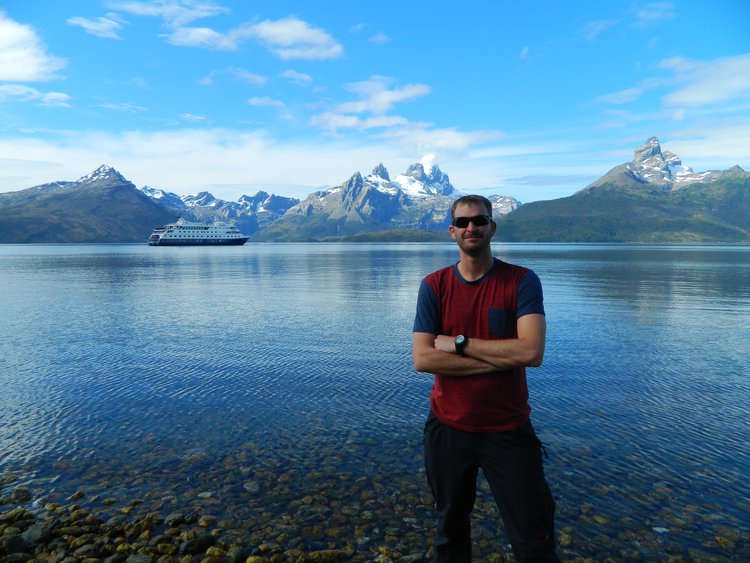
Our local experts have answers!
Connect with our Chile-based travel experts for the best local advice and expert help planning a better trip!
12. El Tatio Geysers and Puritama Hot Springs
El Tatio Geysers, about 50 miles northeast of San Pedro de Atacama, sit at an altitude of 14,100 feet and is the highest geyser field in the world. Here, you can admire the breathtaking display of over 40 geysers with fumaroles reaching up to 32 feet.
Get here early and be sure to bring a swimsuit so that you can soak in the reinvigorating waters of the Puritama hot springs.
The Tatio Geysers are run by representatives of the Lickan Antay communities of Caspana and Toconce and you need to reserve your visit ahead of time. You can find rates and schedules on their website in Spanish: https://eltatio.net/
The Puritama Reserve is owned and managed by a sustainable tourism lodge with long standing in the area. You can find rates and schedules on the Reserve’s website in English: https://termasdepuritama.cl/en/shop/
13. Los Flamencos National Reserve
Most of the iconic attractions around San Pedro de Atacama are within one of the seven disconnected sectors that make up Los Flamencos National Reserve, the only protected area in the vicinity.
The different sectors are run by Chile’s national parks authority (the National Forestry Corporation – CONAF by its acronym in Spanish) in co-management with the corresponding Lickan Antay communities (Caspana, Coyo, Socaire, Toconao, or Toconce). The local communities are in charge of the various sites’ on-site administration, and they sell entry tickets and organize tour logistics.
Therefore, if you’re visiting on your own, you’ll need to check availability and rates for each sector on their respective websites. Note that four of the sectors are currently closed to the public for conservation purposes.
In all cases, if you choose to visit as part of an organized tour/excursion, make sure that the company you book with will handle purchasing tickets and any other necessary services.
Below are some of the main sights in the reserve:
14. Salar de Atacama
Photo: Francesco Mocellin, CC BY-SA 3.0, via Wikimedia Commons
Located just 55 km south of San Pedro de Atacama, the Salar de Atacama is Chile's largest salt flat, and the third largest in the world after the Salar de Uyuni in Bolivia, and the Salinas Grande in Argentina. Covering an area of about 1,200 square miles, this is a truly vast area.
Surrounded by mountains, including prominent volcanoes like Licancabur and Láscar (Chile’s most active), it offers stunning views.
In recent years, this has also become an important center for lithium extraction.
Two lagoons, Laguna Chaxa and Laguna Cejar, are among the big attractions in the salt flat. Just a little over 10 miles from San Pedro, the Laguna Cejar is a sinkhole lake with salt concentrations ranging from 5 to 30%, on pay with Dead Sea. You can swim in the lagoon, so be sure to bring your bathing suit when visiting and be prepared to float effortlessly on its salty but buoyant waters.
15. Laguna Chaxa
Laguna Chaxa (Chaxa Lagoon) is located 37 miles south of San Pedro de Atacama in the Soncor Sector of Los Flamencos National Reserve.
The main reason for coming here is to see the bands of flamingos and other bird species who eat the crustaceans, mollusks, and other creatures that live in the brine lagoon. Backed by volcanoes, the Lagoon is incredibly picturesque, especially at sunset.
The place is run by the Lickan Antay Community of Toconao and has a bilingual visitor center. You can find more information in English and buy tickets on their website: https://comunidadtoconao.cl/wp/en/st_tour/laguna-chaxa/
16. Pukara Quitor and Aldea Tulor
Ruins at Pukará Quitor. Photo: Lastutok, CC BY-SA 3.0, via Wikimedia Commons
The ruin sites of Pukará Quitor – a Lickan Antay fort dating from the 12th century – and Aldea Tulor (Tulor Village) are vestiges of this culture’s struggle to avoid Tiwanaku and Inca domination. They are only 2 miles southwest of San Pedro de Atacama.
At Aldea Tulor there’s a trail that you can hike, so long as you’re accompanied by a tour guide of the Lickan Antay Community of Coyo, which runs the place. You’ll need to book ahead of time at the following email: comdecoyo@yahoo.com
17. Cordillera de la Sal, Death Valley, Moon Valley
Venturing further into the desert, the Cordillera de la Sal (Salt Mountain Range), Valle de la Muerte (Death Valley), and Valle de la Luna (Moon Valley) provide fantastic views of unusual desert formations that many visitors say look as if from another planet.
When you type “Atacama Desert” into Google, its almost certainly the images of these places that you’ll see.
These amazing landscapes are also managed by the Lickan Antay Community of Coyo, and entry tickets can be bought here: https://www.puntoticket.com/valle-de-la-luna

What to do in the Atacama Desert
1. Discover the first humans in the Atacama Desert
The area surrounding Arica is the place of origin of the Chinchorro culture, which developed a society that relied on hunting and gathering along these coasts between 5,450 and 890 BC. The Chinchorro culture left behind many mummies, which are the oldest in the world (even predating the Egyptian mummies).
Discover this culture at the two archaeological museums run by the local Universidad de Tarapacá: the Colon 10 Site Museum, in downtown Arica, and the Museo Arqueológico San Miguel de Azapa (San Miguel de Azapa Archaeological Museum).
2. Conquer the waves in Arica, Iquique, and Antofagasta
The cities of Arica, Iquique, and Antofagasta have several good surfing beaches.
In Arica, you’ll find Chile’s most famous wave, called ‘El Gringo’ in honor of the American man who rode this wave in 1970 and was the first person to do so. This A-frame slab is located on the tip of the Alacrán Peninsula and recommended only for professional surfers because it breaks too close to the rugged rocky headland, leaving almost no margin for error.
El Brazo and La Isla are two other waves for advanced surfers that occur here. Other good beaches for advanced surfers in the area include La Lisera beach with El Buey wave, in Arica, and El Colegio and Las Urracas beaches, in Iquique.
The beaches of Cavancha and Huaiquiue, in Iquique, are the favorite ones for intermediate surfers, while las Machas and Chinchorro, in Arica, along with Juan López, in Antofagasta, are the best ones for beginners.
Although the Chilean coast has swells all year round, the best time to surf here is between June and November. If you’re not traveling with your own board, there are plenty of local companies that you can easily rent one from.
3. Hike among ancient ruins and rock art
Throughout the Atacama Desert, you can explore ancient ruins and impressive rock art. Start at the Azapa and Lluta valleys, close to Arica. In the Azapa Valley, you’ll find ancient geoglyphs and the ruins of an Inca fort (Pukará) that you can visit, in addition to the most comprehensive museum on pre-Columbian cultures of the Atacama Desert.
The Lluta Valley has some of the largest geoglyphs in the area. These include the Eagle, the Large Man, the Small Man, and the Bird, all of them measuring between 98 ft and 196 ft wide.
Close to Iquique, you can admire the 390-ft long geoglyph called the Giant of Atacama alongside Unita Hill.
Finally, while in the vicinity of San Pedro de Atacama, you can explore the fort and village of Pukará Quitor and Aldea Tulor.
4. Go birdwatching from the beaches to the Andes mountains
Starting in Arica and Lauca National Park and continuing south until you reach the Atacama Salt Flat and Los Flamencos National Reserve, you will be able to see many different resident and migratory birds.
The river mouth of the Lluta River is a great place to observe marine birds, while the Chaca Valley is home to the Arica hummingbird (Eulidia yarrellii), which is the smallest bird in Chile and on the verge of extinction. Although you can see them year-round, during the summer hummingbirds tend to go up to the High-Andean plateaux, while they prefer the valleys in the wintertime.
Over 100 aquatic bird species have been identified in Lauca National Park. You can see most of them at the Parinacota lagoon and peatlands (locally called bofedales) and Lake Chungará, along with other iconic wildlife species such as the vizcacha (a small rodent) and the South American camelids: vicuñas, guanacos, llamas, and alpacas.
In Iquique, the Cavancha Peninsula is a well-known site to see marine birds. If you go further south, you’ll reach the Patache Peninsula, which is an important nesting site for the Humboldt Penguin.
The many wetlands found in San Pedro de Atacama and its surroundings are all great birdwatching sites, but Chaxa Lagoon is the most prominent. Not only can you see hundreds of birds migrating from North America, but also the three flamingo species that inhabit Chile and nest here: Chilean Flamingo (Phoenicopterus chilensis), Andean Flamingo (Phoenicoparrus andinus), and James’ Flamingo (Phoenicoparrus jamesi).
The best times to see birds feeding is during sunrise and sunset.
5. Go back in time to the glory days of mining
The Atacama Desert was the epicenter of an important mining boom driven by saltpeter and other minerals in the second half of the 19th century. Here, you can explore the abandoned Humberstone and Santa Laura Saltpeter Works, close to Iquique, to see vestiges of how thousands of miners and their families lived in company towns during the peak of the production of this fertilizer, roughly between 1880 and 1940.
These ghost towns have been declared a World Heritage Site and you can visit them on your own or with a local tour operator.
Further south, the Museo Ruinas de Huanchaca (Huanchaca Ruins Museum), close to Antofagasta and across from the city’s casino, harbors the remnants of a silver smelting plant built in the 19th century. At its peak, it employed over 1,000 people and was a key factor in the city’s development. It ceased operations in 1902 and was abandoned until it was transferred to the Catholic University of the North to conserve its heritage.
The Museum is part of Huanchaca Cultural Park and received an award for its architecture. The exhibits include highlights such as a garden of rocks, planes, and spheres of the Atacama Desert, hundreds of fossils and minerals on display, a mural that recreates how the foundry worked in the 19th century, and a nomad robot that was sent by NASA to explore the Atacama Desert and runs on solar energy.
6. Participate in an Andean carnival
If you’re in Arica in February, try to participate in any of the carnivals held in the region, which occur 40 days before Holy Week. The largest and most important one is celebrated in Putre and is attended by hundreds of people of Aymara origin who come in from different towns in the altiplano. Much of the rituals, dances, colorful clothing, and rhythms that make up the festival belong to the Andean cosmovision.
Other places that organize carnivals close to Arica include San Miguel de Azapa (in the valley), Codpa, Belén, and Socoroma. Although it is usually perfectly fine to participate, it is recommended to speak with the local alférez (ensign) before attending the carnivals, since in some cases these can be intimate community celebrations.
7. Search for stars under the clearest skies
The Atacama Desert has some of the clearest skies in the world and the stargazing here is extraordinay. The extremely impressive ALMA observatory, built in 2004, focuses on studying how stars are formed and they offer free guided tours on Saturdays and Sundays. It’s located approximately 20 miles southeast of San Pedro de Atacama.
Other smaller but still well-equipped locally run observatories provide tourists with stargazing opportunities and interesting information about Lickan Antay cosmovision. Several tour operators offer these excursions every night, except for when there’s a full moon.

Connect with a Chile travel expert for help perfecting your itinerary, answers to all your travel questions, and fabulous local tips for a better visit!
8-day Atacama Desert itinerary
Consider 8 days to be the bare minimum needed in order to do a “comprehensive” tour of Chile’s entire Atacama Desert. This is certainly a very rushed itinerary that has many long days in the car one after the other, but with so little time, this is what you need to do if you want to see the region’s principal cities and some of its beautiful volcanos, lakes, and salt flats in the High-Andean plateaux.
Here’s the way I’d structure this trip:
Day 1: Fly from Santiago to Arica
Enjoy a half-day city tour and head out to the oases that are the Lluta and Azapa valleys.
Day 2: Day trip to Lauca National Park
Set out an a full-day excursion (around 14 hours) to Lauca National Park and the High-Andean towns of Putre, Socoroma, and Parinacota.
Day 3: Head south to Iquique
Make the 4-hour drive south to coastal Iquique, which is a great place to do adventure sports like paragliding, sandboarding, mountain biking, diving, and surfing, or just relax on the beach. Be sure to visit the tax-free zone, known as ZOFRI.
Day 4: Day trip to the former mining towns of Santa Laura and Humberston
Head to the nearby ghost towns of Santa Laura and Humberstone, which were formerly bustling mining towns that extracted saltpeter. Alternatively, you can choose to take a half-day excursion to the 390-ft long geoglyph called the Giant of Atacama or go birdwatching along the coast.
Day 5: Travel south to Antofagasta
Antofagasta is a 5-hour drive south of Iquique, so get a very early start to your day today. You won’t arrive until the afternoon, at which point you can choose between spending the rest of the day exploring the city or arranging a visit to the Paranal Observatory or the Museo Ruinas de Huanchaca (dedicated to a silver smelting plant that was built here in the 19th century).
Days 6-8: San Pedro de Atacama
Spend the next three days touring the otherwordly landscapes surrounding San Pedro de Atacama. With three days, you’ll have time for a swim in the hidden lagoons of Baltinache, a visit the nearby ancient indigenous ruins of Quitor and Tulor, excursions to the Moon and Death Valleys, a walk around the oasis town of Toconao and Laguna Chaxa (Chaxa Lagoon) in Los Flamencos National Reserve, a full-day trip to El Tatio Geysers and Puritama Hotsprings, and evening stargazing opportunities.




Chat with a Chile expert





